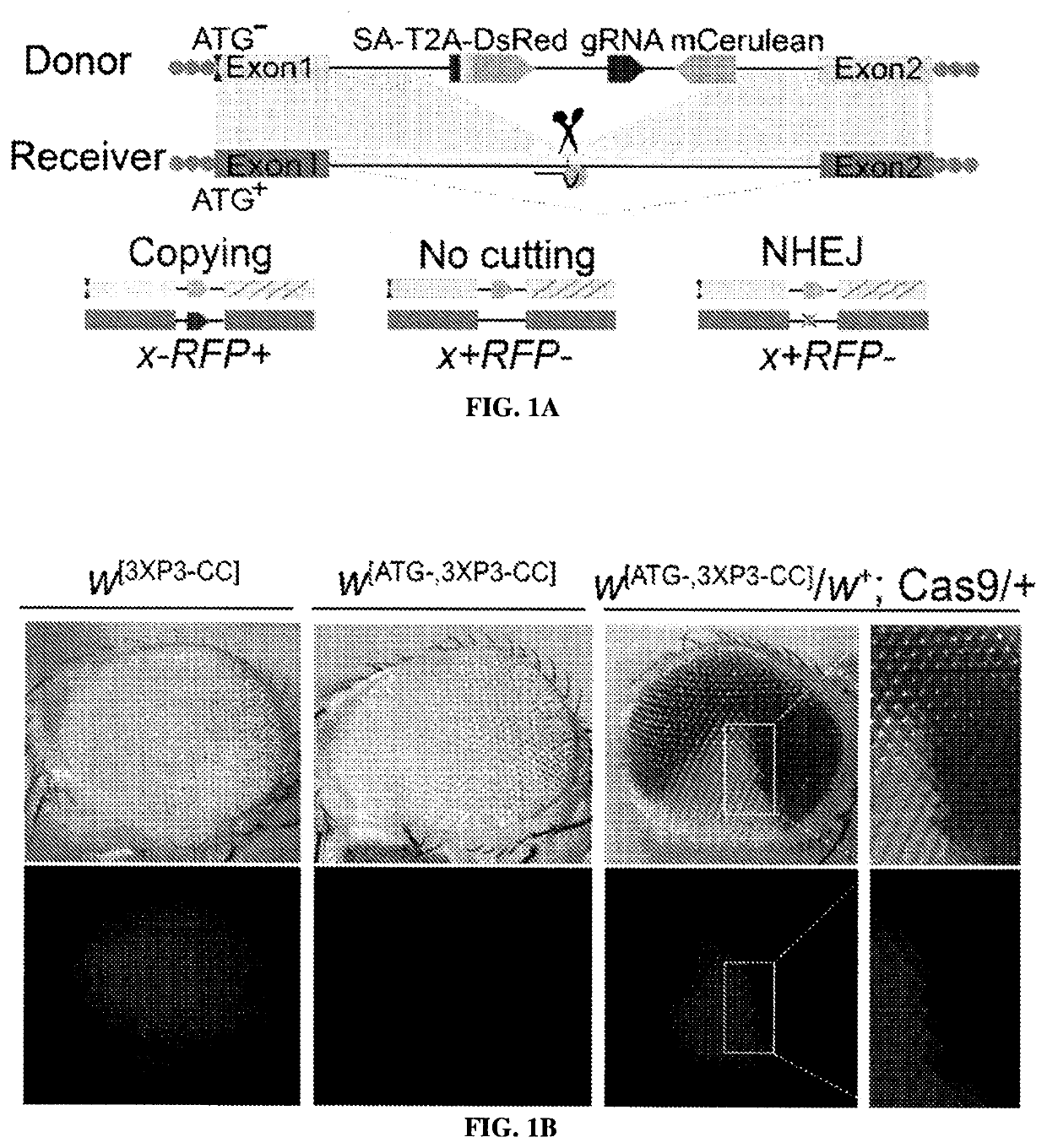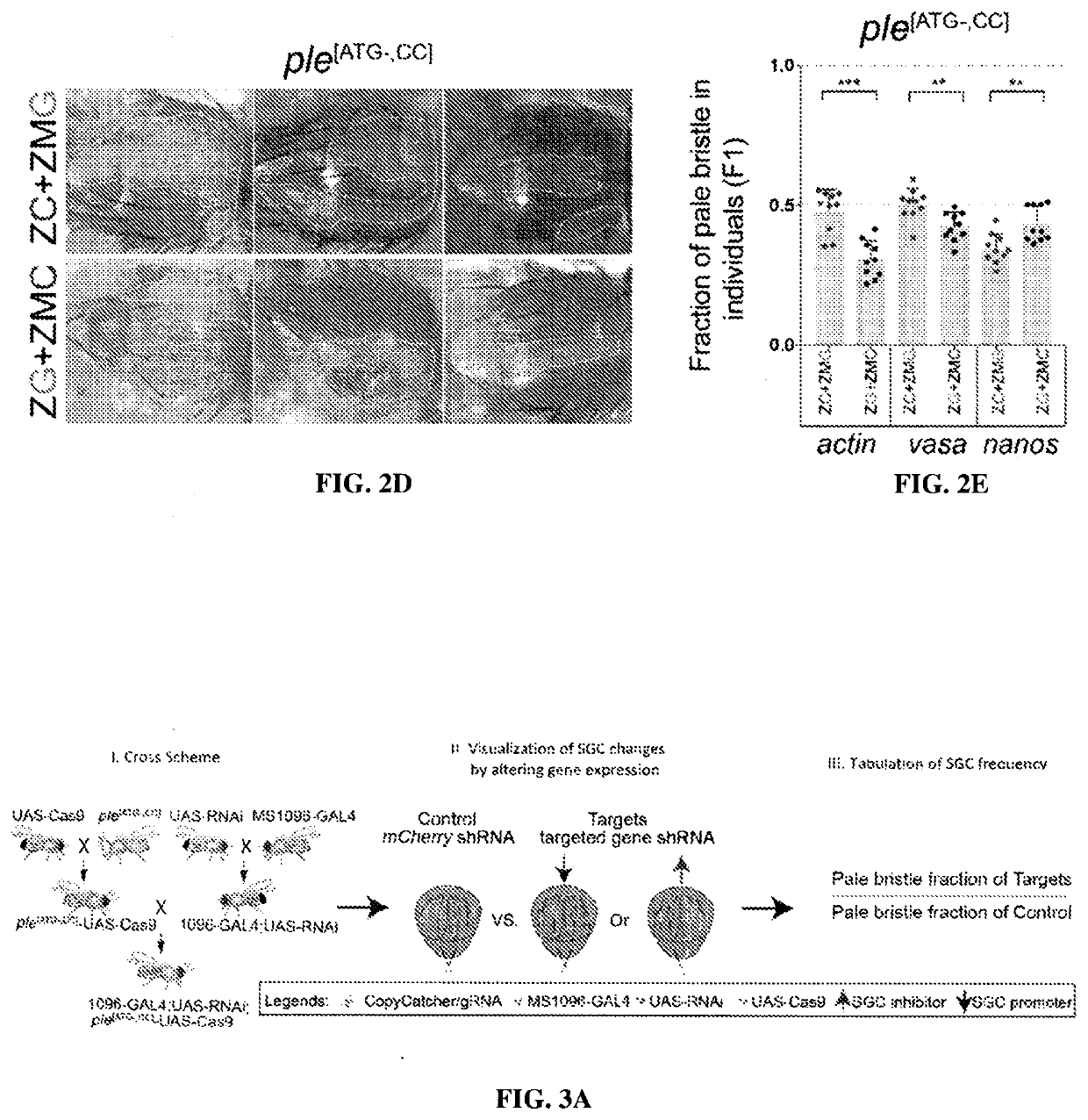Systems and methods for performing and measuring homologous chromosome template repair
a technology of homologous chromosomes and homologous motifs, applied in the field of systems and methods for performing and measuring homologous chromosome template repair, can solve problems such as additional mutations
- Summary
- Abstract
- Description
- Claims
- Application Information
AI Technical Summary
Benefits of technology
Problems solved by technology
Method used
Image
Examples
example 1
pyCatchers for the Investigation of Homologous Chromosome-Directed Repair (HTR) in Somatic Cells
Results
Architecture of Active Genetic CopyCatcher Systems
[0167]We sought to resolve the nature of somatic mutations generated through the action of gene drives using novel active genetic elements referred to as CopyCatchers designed to detect and quantify potential somatic copying events. CopyCatchers include a guide RNA (gRNA) for copying themselves at their site of genomic insertion into the introns of target genes and also harbor a genetic cassette that marks individual and descendant clones of cells in which these elements have been copied to the homologous chromosome. Such clones are delineated both by expression of a fluorescent marker (DsRed) and by creation of visible adult phenotypes (FIG. 1A). CopyCatchers also carry a T2A-DsRed transgene preceded by a strong splice acceptor (SA) that hijacks the original splicing of the target gene, thus generating in-frame fusion products betw...
example 2
REFERENCES (Example 2)
[0349]1. P. Horvath et al., Diversity, activity, and evolution of CRISPR loci in Streptococcus thermophilus. Journal of bacteriology 190, 1401-1412 (2008).[0350]2. M. Jinek et al., A programmable dual-RNA-guided DNA endonuclease in adaptive bacterial immunity. science 337, 816-821 (2012).[0351]3. M. Adli, The CRISPR tool kit for genome editing and beyond. Nature communications 9, 1-13 (2018).[0352]4. E. Bier, M. M. Harrison, K. M. O'Connor-Giles, J. Wildonger, Advances in engineering the fly genome with the CRISPR-Cas system. Genetics 208, 1-18 (2018).[0353]5. A. V. Anzalone, L. W. Koblan, D. R. Liu, Genome editing with CRISPR-Cas nucleases, base editors, transposases and prime editors. Nature biotechnology 38, 824-844 (2020).[0354]6. H. Li et al., Applications of genome editing technology in the targeted therapy of human diseases: mechanisms, advances and prospects. Signal transduction and targeted therapy 5, 1-23 (2020).[0355]7. R. Scully, A. Panday, R. Elang...
PUM
| Property | Measurement | Unit |
|---|---|---|
| elongation | aaaaa | aaaaa |
| concentration | aaaaa | aaaaa |
| volume | aaaaa | aaaaa |
Abstract
Description
Claims
Application Information
 Login to View More
Login to View More - R&D Engineer
- R&D Manager
- IP Professional
- Industry Leading Data Capabilities
- Powerful AI technology
- Patent DNA Extraction
Browse by: Latest US Patents, China's latest patents, Technical Efficacy Thesaurus, Application Domain, Technology Topic, Popular Technical Reports.
© 2024 PatSnap. All rights reserved.Legal|Privacy policy|Modern Slavery Act Transparency Statement|Sitemap|About US| Contact US: help@patsnap.com










